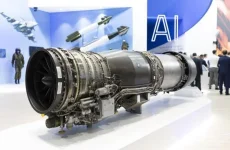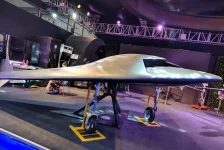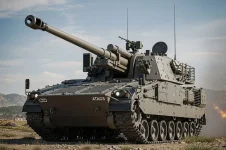- Views: 2K
- Replies: 14
Russia has announced the development of a new-generation engine designed to replace the existing AL-31 and AL-41 engines currently powering its Su-30 and Su-35 fighter jets. This advancement offers significant improvements in performance and durability, potentially impacting the global fighter jet landscape, including India's Su-30MKI fleet.
The new engine boasts a redesigned architecture featuring wide-chord fan blades, contributing to reduced weight and increased structural strength. This innovation enhances aerodynamic efficiency, particularly during high-stress flight maneuvers. Rigorous testing at the Central Institute of Aviation Motors (TsIAM) has confirmed the engine's superior frontal performance, exceeding international benchmarks and setting new standards for efficiency in its class.
Production is well underway, with design documentation finalized and preparations for mass production in progress. Notably, over 70% of the engine's components are adapted from existing production lines, ensuring cost-effective scalability. Four prototypes have already been built and tested, validating the engine's technical specifications and confirming its adherence to global standards.
The engine's compatibility with both AL-31 and AL-41 powered aircraft makes it a compelling option for operators worldwide, particularly for those seeking long-term replacements for aging engines. With a projected production capacity exceeding 1,500 units, the engine is poised to address a global demand for enhanced fighter jet propulsion.
India, operating one of the world's largest Su-30MKI fleets, is a key potential market for this new engine. The Indian Air Force (IAF) and Hindustan Aeronautics Limited (HAL) are currently exploring options to upgrade their Su-30MKI fleet, aiming to extend service life and enhance capabilities. Integrating this advanced Russian engine could significantly modernize the IAF's fighter jet arsenal.
Key attributes of the new engine include
- Increased Durability and Operating Life: A designated resource of 6,000 flight hours represents a significant improvement over previous models, promising reduced maintenance and operational costs.
- Improved Resistance to Environmental Hazards: Enhanced resilience to bird strikes and harsh environmental conditions extends operational range and reliability across diverse terrains and climates.
- Enhanced High-Speed Performance: Increased permissible operating time at high speeds (M+) enables greater endurance during high-speed maneuvers and supersonic flight.
- No Modifications Required for Airframe Compatibility: "Plug-and-play" compatibility with existing AL-31 and AL-41 airframes eliminates the need for aircraft modifications, minimizing downtime and integration costs.
- Fan and Full Authority Digital Engine Control (FADEC): FADEC optimizes performance, fuel efficiency, and engine control, enhancing both operational effectiveness and pilot safety.



